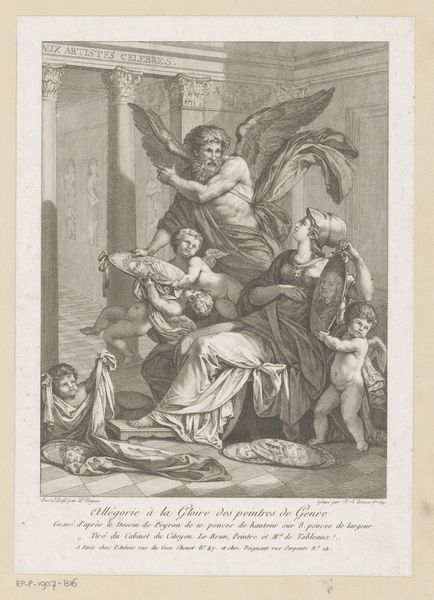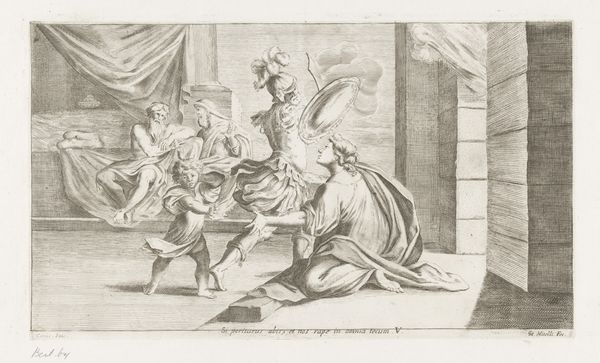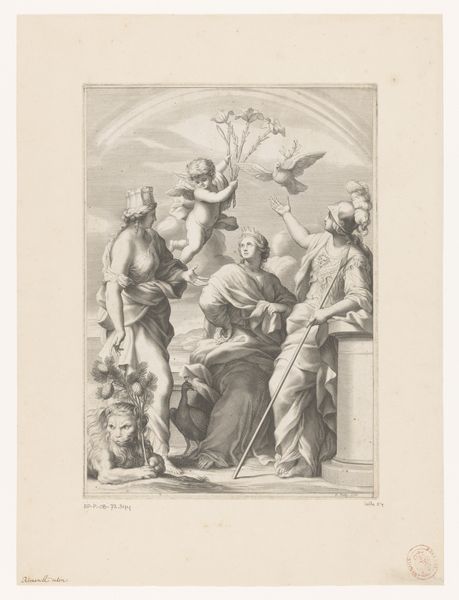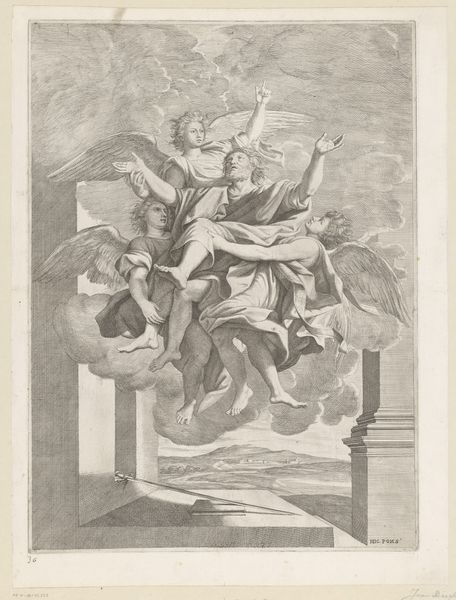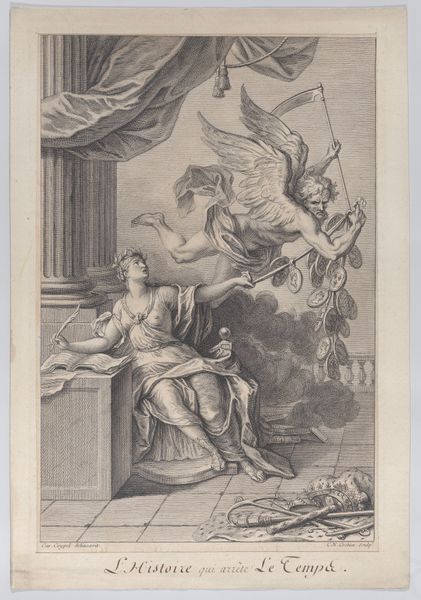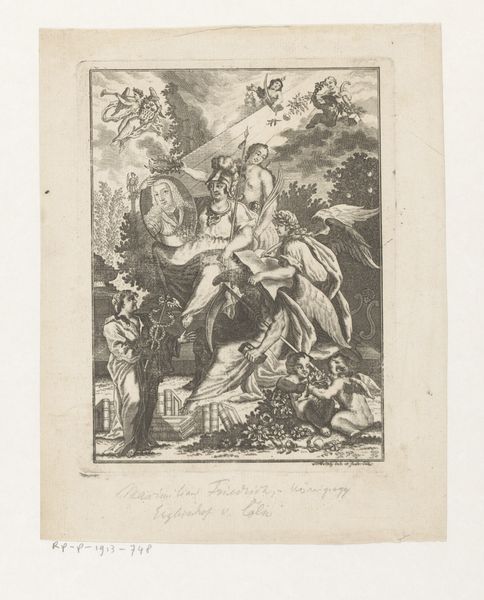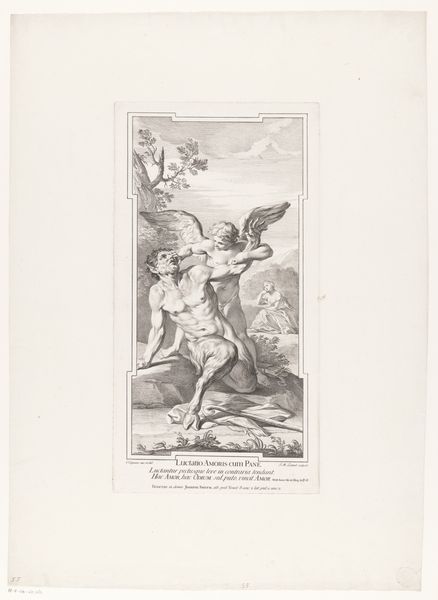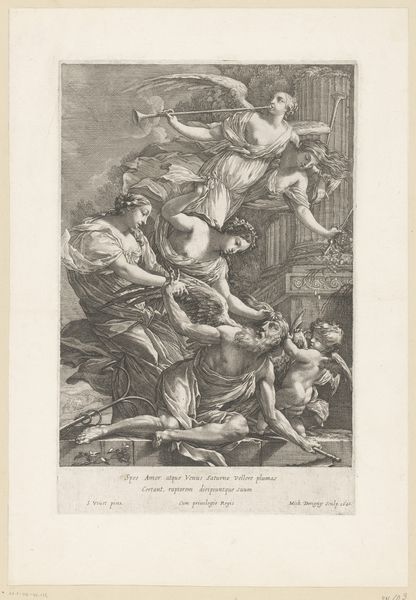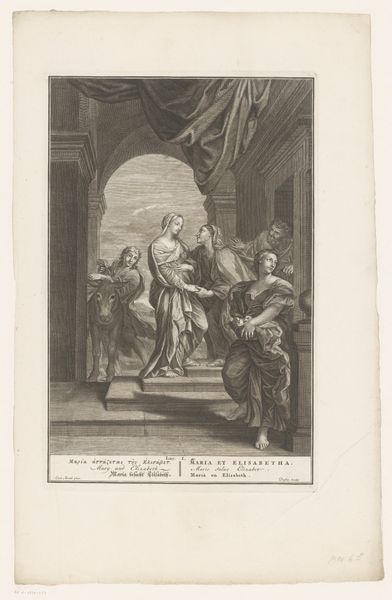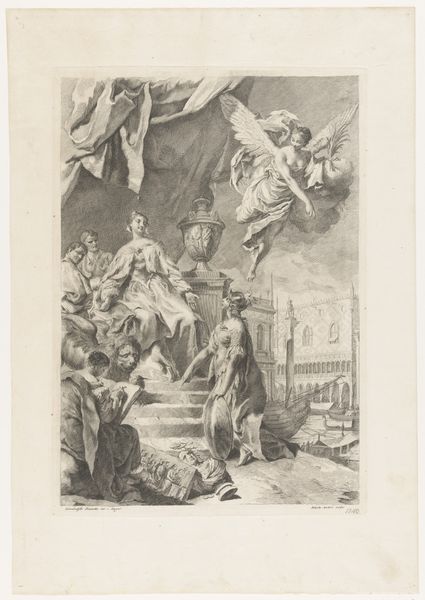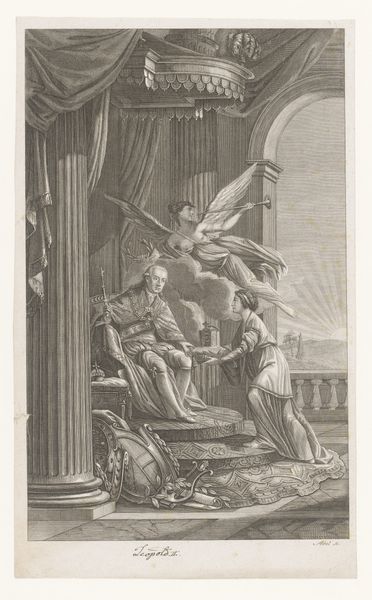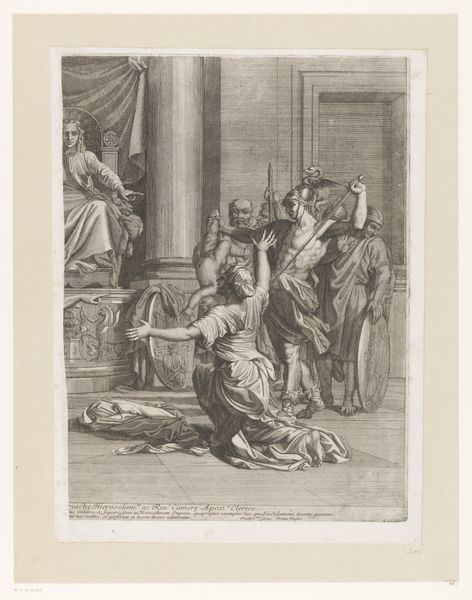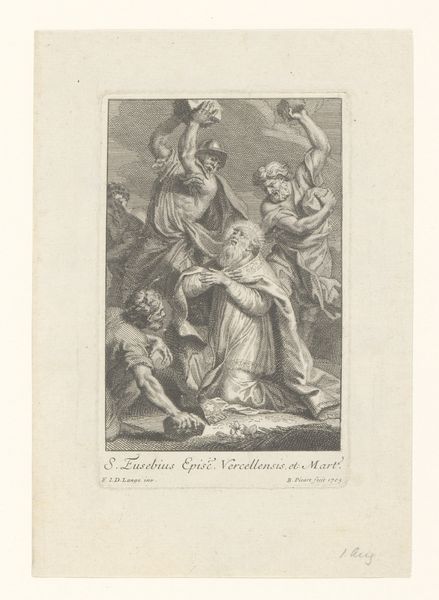
print, engraving
#
narrative-art
#
baroque
# print
#
figuration
#
line
#
history-painting
#
engraving
Dimensions: height 311 mm, width 203 mm
Copyright: Rijks Museum: Open Domain
Editor: Here we have Michel Dorigny's "The First Dream of Joseph," an engraving from 1640. It strikes me as quite intimate, almost claustrophobic, despite the presence of an angel. What can you tell me about it? Curator: The intimacy you observe is compelling. Consider the moment Dorigny depicts: Joseph, in turmoil over Mary's pregnancy, is visited by an angel. This print participates in a long history of representing divine intervention in patriarchal structures. The angel’s gesture, while ostensibly comforting, reinforces Joseph's patriarchal role as the protector and father figure. How does this interplay of divine will and social order strike you? Editor: That’s a really interesting point. I hadn’t thought about how the angel reinforces Joseph's power, not just informs him. Does the style, this Baroque line work, contribute to that feeling at all? Curator: Absolutely. The Baroque, with its emphasis on drama and emotional intensity, served the interests of the Counter-Reformation, which sought to reaffirm traditional hierarchies. Here, the sharp lines and dramatic lighting intensify the sense of Joseph’s divinely sanctioned authority within his domestic space. Consider the historical context: Europe was grappling with religious and political upheaval, and images like this served to solidify existing social norms. Is there anything about the visual composition that might underscore this message of solidified norms? Editor: Perhaps the way the angel’s wing almost cages Joseph? It's a message, but also a confinement within expectations. Curator: Precisely! It’s a reminder that even divine messages can perpetuate, and indeed sanctify, social expectations. And within those social expectations there can be a type of symbolic or even real-world oppression. Editor: I didn't initially see the visual components as playing a part in enforcing those kinds of established frameworks. Now I can see how this print embodies a powerful commentary on religion and the codifying of gender roles through this divine encounter. Curator: And hopefully encourages reflection on those representations even today.
Comments
No comments
Be the first to comment and join the conversation on the ultimate creative platform.
